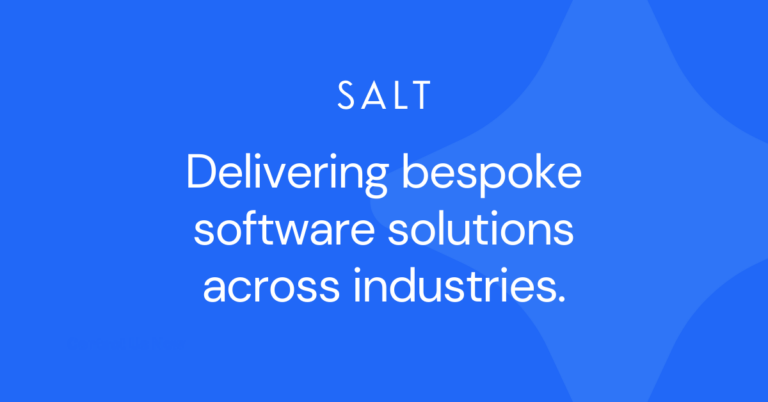The mobile app industry is constantly evolving and expanding, with millions of applications available on various app stores. To meet the demands of this competitive market, developers are looking for ways to create high-quality applications in a timely and cost-effective manner.
One solution to this challenge is the use of cross-platform frameworks for mobile app development.
A cross-platform framework allows developers to write code once and deploy it on multiple platforms, including iOS, Android, and even web. By leveraging the benefits of cross-platform development, such as reduced development time, code reusability, consistent user experience, easy maintenance and updating, and access to a larger talent pool, developers can create applications that are not only high-quality, but also cost-effective and accessible to a wider audience.
This blog post aims to provide a comprehensive overview of the benefits of using a cross-platform framework for mobile app development and the impact it can have on businesses and developers.
What is a cross-platform framework?

A cross-platform framework is a set of tools, libraries, and technologies that allow developers to write code once and run it on multiple platforms. The goal of a cross-platform framework is to reduce the time, effort, and cost involved in developing, testing, and deploying applications across multiple platforms.
With a cross-platform framework, developers can write code in a single programming language, such as JavaScript, C#, or Python, and then deploy the same code on multiple platforms, including iOS, Android, and web.
One of the biggest benefits of using a cross-platform framework is the ability to reuse code across different platforms. This not only saves time, but also ensures that the user experience remains consistent across different devices and platforms.
Additionally, cross-platform frameworks make it easier for developers to maintain and update applications, as changes made to the code will be reflected on all platforms.
There are several popular cross-platform frameworks available today, including React Native, Xamarin, Flutter, and Ionic. Each framework has its own unique features and capabilities, and choosing the right one for a particular project will depend on the specific requirements and goals of the project.
A cross-platform framework provides a flexible and efficient solution for mobile app development by allowing developers to write code once and deploy it on multiple platforms. By leveraging the benefits of cross-platform development, developers can create high-quality, cost-effective, and accessible applications for a wider audience.
Overview of the benefits of using a cross-platform framework for mobile app development:

Mobile app development has become a critical aspect in the growth and success of many businesses and organizations. With the rise of smartphone and tablet usage, the demand for high-quality, accessible, and cost-effective mobile apps is higher than ever.
The use of cross-platform frameworks in mobile app development offers a range of benefits to both developers and businesses. Some of the key benefits of using a cross-platform framework include:
Reduced development time: Cross-platform frameworks allow developers to write code once and deploy it on multiple platforms, reducing the amount of time and effort required to develop and maintain applications.
Code Reusability: By writing code once, developers can reuse the same code on multiple platforms, improving the efficiency of the development process and ensuring a consistent user experience across different devices.
Consistent User Experience: Cross-platform frameworks allow developers to create applications that have a consistent look and feel across different platforms, improving the user experience and ensuring a seamless transition from one platform to another.
Easy Maintenance and Updating: Cross-platform frameworks make it easier for developers to maintain and update applications, as changes made to the code will be reflected on all platforms.
By leveraging these benefits, businesses can create high-quality, cost-effective, and accessible applications tailored to meet the specific needs of the users.
Reduced Development Time:

One of the key benefits of using a cross-platform framework for mobile app development is reduced development time. By writing code once and deploying it on multiple platforms, cross-platform frameworks eliminate the need to write separate code for each platform, saving developers time and effort.
How can cross-platform frameworks reduce development time?
The use of cross-platform frameworks in mobile app development has revolutionized the way developers approach creating applications. These frameworks allow developers to write code once and run it on multiple platforms, thereby reducing the amount of time and effort required to develop an app for each platform.
With cross-platform frameworks, developers can use a single codebase that is compatible with various platforms, saving time and resources. This streamlined approach to development reduces the complexity of creating and maintaining apps, resulting in faster and more cost-effective development processes.
In this article, we will explore how cross-platform frameworks can reduce development time and why they are becoming increasingly popular among developers and businesses alike.
Single codebase: Cross-platform frameworks allow developers to write code once and deploy it on multiple platforms, eliminating the need to write separate code for each platform.
Centralized development tools: Cross-platform frameworks provide centralized development tools that simplify the development process and reduce the time required to develop and maintain applications.
Improved Code Reusability: Cross-platform frameworks provide centralized development tools that simplify the development process and reduce the time required to develop and maintain applications.
Faster Testing and Deployment: Cross-platform frameworks provide streamlined testing and deployment processes, reducing the time required to test and deploy applications on multiple platforms.
Automated Platform Integration: Cross-platform frameworks provide automated platform integration tools that simplify the process of integrating applications with different platforms and reduce the time required to deploy applications.
Single-point Maintenance: By using a cross-platform framework, developers can maintain and update applications from a single point, reducing the time required to make changes and improve the efficiency of the development process.
Examples of cross-platform frameworks that have reduced development time:

Cross-platform frameworks have become increasingly popular in recent years, as they provide a range of benefits that can significantly reduce development time. By using a single codebase that is compatible with multiple platforms, cross-platform frameworks simplify the development process and make it easier to create and maintain high-quality mobile applications.
Some popular cross-platform frameworks that have been known to reduce development time include:
React Native: his framework allows developers to build native mobile applications using JavaScript and React. It provides a single codebase for both iOS and Android platforms and has a large community of developers and libraries, making it easier to find solutions to common problems.
Flutter: This framework, developed by Google, is used for building high-performance, cross-platform mobile applications. It uses a single codebase and provides fast development and hot reloading, making it easier to quickly test and deploy changes.
Xamarin: Xamarin is a Microsoft-owned framework that allows developers to build native mobile applications using C#. It provides a shared codebase for iOS, Android, and Windows platforms, reducing the time and effort required to develop and maintain applications.
PhoneGap: PhoneGap is a popular open-source framework for building cross-platform mobile applications. It provides a single codebase for multiple platforms and integrates with a range of development tools, making it easier to create and maintain applications.
These are just a few examples of cross-platform frameworks that have been known to reduce development time. By using these frameworks, developers can write code once and deploy it on multiple platforms, reducing the time and effort required to create and maintain high-quality mobile applications.
Code Reusability:

Code reusability is the practice of using existing code to develop new applications. In the context of mobile app development, code reusability refers to the ability to use the same code across multiple platforms, rather than writing separate code for each platform.
Code Resuability in cross-platform frameworks:
Code reusability in cross-platform frameworks offers several additional benefits beyond reducing development time, improving user experience, and improving code quality.
Easier Maintenance: Code reusability makes it easier to maintain applications, as changes can be made in one place and automatically applied to all platforms. This reduces the risk of bugs and improves the efficiency of the maintenance process.
Faster Time-to-Market: By reducing the time required to develop and maintain applications, code reusability can help organizations to bring new products and features to market more quickly, improving their competitiveness.
Improved Scalability: Reusing code across multiple platforms makes it easier to scale applications, as new features can be added more easily and consistently across platforms.
Access to Cross-Platform Libraries: Cross-platform frameworks typically offer access to a variety of libraries and tools that can be used to create cross-platform applications. This can help to reduce development time and improve the overall quality of the application.
Benefits of Code Reusability:
Code Reusability provides several key benefits to developers and organizations. Beyond reducing development time and improving code quality, code reusability also streamlines the development process, enables easier maintenance, and offers flexibility in adapting to changing needs.
Additionally, it can help organizations stay ahead of the competition by allowing them to quickly respond to changes in technology and market trends.
In addition to the above mentioned points, some additional benefits of Code Reusability are:
Consistency: By reusing code, organizations can ensure that the same functionality is available across multiple platforms, providing a consistent user experience.
Better code quality: By using code that has been tested and used in other applications, organizations can improve the overall quality of their applications and reduce the risk of bugs.
Flexibility: Code reusability allows organizations to easily adapt their applications to changing needs, without having to start from scratch.
Future-Proofing: Reusing code in future applications can help organizations to be prepared for future changes in technology, user needs, and market trends.
How Code Reusability can be achieved in cross-platform frameworks?

Code reusability is a critical aspect of cross-platform mobile app development, as it helps to reduce development time and improve efficiency. Cross-platform frameworks provide several ways for developers to achieve code reusability, such as through the use of modular design, shared libraries, component-based development, API wrappers, and cross-platform libraries.
Modular Design: Cross-platform frameworks often use a modular design that allows developers to create reusable components and modules. This design pattern facilitates code sharing and reduces the need to write code from scratch.
Shared Libraries: Cross-platform frameworks often provide shared libraries that developers can use in their applications. These libraries contain pre-written code that developers can easily incorporate into their projects, reducing the time and effort required to write code from scratch.
Component-Based Development: Cross-platform frameworks often support component-based development, which allows developers to reuse components across multiple platforms. This approach enables developers to create reusable UI components, reducing the time and effort required to develop separate components for each platform.
API Wrappers: Cross-platform frameworks often provide API wrappers that allow developers to access platform-specific features and APIs in a cross-platform manner. This reduces the need to write separate code for each platform and enables developers to access these features in a unified way.
Cross-Platform Libraries: Cross-platform frameworks often provide access to cross-platform libraries, reducing the need for developers to write platform-specific code. These libraries are designed to work across multiple platforms, allowing developers to write code once and use it on multiple platforms.
By utilizing these techniques, cross-platform frameworks help organizations achieve code reusability, improving the efficiency and cost-effectiveness of mobile app development.
Consistent user Experience:

The ability to provide a consistent user experience across multiple platforms is one of the key benefits of using a cross-platform framework for mobile app development.
By leveraging a common codebase, cross-platform frameworks help ensure that the user experience remains consistent regardless of the platform being used, providing a seamless and consistent experience for users.
This consistency can improve the overall quality and usability of the app, making it easier for users to navigate and interact with the app across different devices and platforms.
How cross-platform frameworks ensure Consistent User Experience?
Cross-platform frameworks ensure consistent user experience by providing a unified approach to designing and building mobile applications. This approach involves using a common codebase and a set of development tools and technologies that are designed to work seamlessly across multiple platforms.
Some of the ways cross-platform frameworks ensure consistent user experience are:
Use of a common UI component library: Cross-platform frameworks often provide a pre-built library of UI components that can be used to build the application’s user interface. This ensures that the look and feel of the app remains consistent across different platforms.
Abstraction of platform-specific differences: Cross-platform frameworks abstract away the underlying platform-specific differences, making it easier to build apps that look and feel the same on all platforms.
Use of a single development environment: By using a single development environment, cross-platform frameworks make it easier for developers to work on the same codebase, regardless of the platform they are using. This helps to ensure that the app’s user experience remains consistent across all platforms.
By ensuring consistent user experience, cross-platform frameworks can help improve the overall quality and usability of the app, making it easier for users to navigate and interact with the app across different devices and platforms.
Benefits of Consistent User Experience in cross-platform mobile app development:

Having a consistent user experience across different platforms is a critical aspect of mobile app development and can bring numerous benefits. A consistent user experience can improve user satisfaction, increase engagement, enhance brand recognition, and reduce development and maintenance costs.
By using a cross-platform framework, developers can ensure that the app provides a seamless and familiar experience for users, regardless of the platform they use. This can help improve the overall quality and usability of the app, making it more appealing to users and easier to navigate.
Some of the prime benefits of consistent user experience are:
Improved User Retention: A consistent user experience can help users feel more comfortable and confident when using the app, which can lead to improved user retention rates.
Better User Adoption: By providing a familiar and intuitive interface, cross-platform frameworks can help increase user adoption rates and make it easier for users to get started with the app.
Increased User Loyalty: A consistent user experience can help build user loyalty by providing a seamless and enjoyable experience across different platforms.
Enhanced User Productivity: A consistent user experience can help users be more productive by making it easier for them to find what they need and complete tasks within the app.
Improved User Experience: Consistent user experience can help improve the overall user experience by providing a seamless and intuitive interface that users are familiar with.
Better User Feedback: By providing a consistent user experience, cross-platform frameworks can help improve the quality of user feedback, as users are more likely to provide constructive feedback when they have a positive experience with the app.
Consistent user experience is a critical aspect of cross-platform mobile app development, and can bring numerous benefits that can help improve the quality, usability, and overall success of the app.
How Consistent user Experience can be achieved in cross-platform for Mobile App Development?

Consistent user experience can be achieved in cross-platform frameworks for mobile app development through a combination of several techniques and strategies:
Use of cross-platform UI libraries and tools:
Cross-platform frameworks often provide a set of UI libraries and tools that allow developers to create a unified look and feel for the app. These libraries often include common UI components such as buttons, text fields, and navigation bars, as well as platform-specific components such as tab bars and navigation drawers.
Definition of platform-specific behaviour:
While the overall look and feel of the app should be consistent across platforms, there may be certain platform-specific behaviors that need to be defined. For example, the way an app handles gestures or animations may differ between iOS and Android. Cross-platform frameworks allow developers to define these platform-specific behaviors in a way that is consistent with the overall design of the app.
Adoption of common user interface components and design patterns:
By using common UI components and design patterns, cross-platform frameworks help ensure that the app has a consistent look and feel across platforms. This can include things like the use of navigation bars, tab bars, and other common interface elements.
Ability to test and debug the app on multiple platforms simultaneously:
Cross-platform frameworks often provide a single codebase that can be easily tested and debugged on multiple platforms. This allows developers to quickly identify and fix any issues that arise, ensuring a consistent user experience across platforms.
Use of a single codebase:
By using a single codebase, cross-platform frameworks reduce the time and effort required to develop and maintain separate versions of the app for different platforms. This helps ensure that the app has a consistent user experience across platforms, as changes made to the codebase will automatically be reflected on all platforms.
Sharing of code between platforms:
Cross-platform frameworks allow developers to share code between platforms, reducing the time and effort required to develop and maintain separate versions of the app. This helps ensure that the app has a consistent user experience across platforms, as changes made to the codebase will automatically be reflected on all platforms.
Easy Maintenance and Updating:

Easy maintenance and updating is a critical aspect of mobile app development, and cross-platform frameworks offer several benefits in this regard. By using a cross-platform framework, developers can streamline the process of fixing bugs, implementing new features, and releasing updates, resulting in a more efficient and cost-effective maintenance process.
In this section, we will explore the benefits of easy maintenance and updating in cross-platform frameworks and how they can help improve the overall quality and longevity of mobile apps.
How cross-platform frameworks make maintenance and updating easy?
The ease of maintenance and updating is a crucial aspect of mobile app development, as it ensures that the app remains functional and relevant for users over time. Cross-platform frameworks offer several benefits in this regard, making it easier to maintain and update apps across multiple platforms.
Centralized codebase: A single codebase for multiple platforms reduces the amount of code that needs to be maintained and updated, making it easier for developers to manage.
Platform Independence: Cross-platform frameworks abstract the underlying platform-specific details, making it easier to update the app across multiple platforms without having to worry about compatibility issues.
Modular Design: Cross-platform frameworks often employ a modular design, which allows developers to update individual parts of the app without affecting the rest of the codebase.
Automated Processes: Many cross-platform frameworks come with tools and processes that automate common maintenance tasks, such as testing and deployment, reducing the time and effort required to keep the app up-to-date.
Community Support: Popular cross-platform frameworks have large communities of developers who contribute to the framework and provide support, making it easier for developers to find solutions to maintenance and updating challenges.
Benefits of easy maintenance and updating in cross-platform frameworks:

The maintenance and updating of mobile apps can be a time-consuming and resource-intensive task. However, using a cross-platform framework can greatly simplify this process and bring several benefits.
In this section, we will explore the advantages of having an easy maintenance and updating process in cross-platform frameworks for mobile app development.
Reduced development costs: Easy maintenance and updating reduces the need for frequent code changes and reduces the cost of development.
Improved app performance: Regular updates can help improve app performance and fix any bugs or glitches.
Better user Experience: Updating the app regularly can improve the user experience by adding new features or fixing any issues.
Time-savings: Easy maintenance and updating saves time as developers can make changes to the codebase more quickly and efficiently.
Improved App Security: Regular updates can help improve the app’s security by fixing any vulnerabilities or security loopholes.
Increased App Reliability: By making it easier to maintain and update the app, cross-platform frameworks can increase its reliability and stability.
How cross-platform frameworks can help achieve easy maintenance and updates?

Cross-platform frameworks play a critical role in ensuring smooth maintenance and updates for mobile applications. These frameworks provide various tools and techniques that make the process of maintenance and updating simple, quick, and cost-effective.
By leveraging the benefits of cross-platform frameworks, developers can easily address bugs, add new features, and improve the overall performance of mobile applications.
Some of the ways cross-platform frameworks can help achieve easy maintenance and updates in mobile app development are:
- Cross-platform frameworks provide a centralized platform for all the code, making it easier to manage and maintain.
- Code modularization and separation of concerns help in reducing code dependencies and making it easier to update specific parts of the application.
- Inbuilt debugging and testing tools help in detecting and fixing errors in a faster and more efficient manner.
- Automated build and deployment processes reduce the manual effort required to release updates and make it easier to push updates to multiple platforms simultaneously.
- Cross-platform frameworks also provide continuous integration and continuous delivery (CI/CD) support, helping to streamline the development and release process.
Takeaway:

In conclusion, cross-platform frameworks for mobile app development offer numerous benefits including reduced development time, increased code reusability, consistent user experience, and easy maintenance and updating.
With the ability to create applications for multiple platforms using a single codebase, cross-platform frameworks help to streamline the development process and reduce costs. Additionally, the ability to achieve a consistent user experience across different platforms ensures a seamless and enjoyable experience for users, while the ease of maintenance and updating helps to keep the application up-to-date and secure.
When choosing a cross-platform framework, it is important to consider your specific needs and requirements, and to evaluate the framework’s features and capabilities.
Additionally, it is advisable to work with experienced developers who have a thorough understanding of the framework and its capabilities.
In the fast-paced world of technology, cross-platform frameworks offer a convenient and cost-effective solution for developing mobile applications that meet the evolving needs of users.
Whether you are a startup or an established enterprise, cross-platform frameworks can help you create high-quality, reliable, and scalable applications that meet your goals and exceed your expectations.


